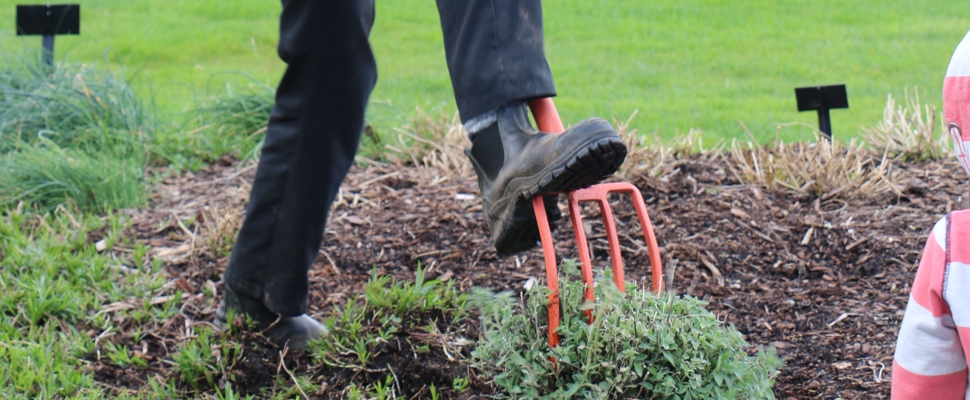
Dividing plants
Dividing is a way to get new plants from old. It will rejuvenate many plants and stops them from getting too big.
Two types of plants commonly propagated by division are clumping plants such as herbaceous perennials, and bulbs. Clumping plants that benefit from division include asters, bromeliads, Phormium, Geranium, Hemerocallis, Hosta, ornamental grasses, Arthropodium and thyme.
For more information about dividing different plant types, click here.
When to divide:
- Division is most successful when plants are not actively growing, typically in winter before new growth starts in spring. If the plants are frost tender, wait until spring to divide them.
- Many perennials grow quickly, forming big clumps. Most benefit from division every three to four years, but if the plant has lost vigour, has smaller flowers than usual, or has died out in the middle, then it is ready to be divided.
How to divide:
- Lift clumps carefully with a sharp spade or garden fork, working around the outside edge of the plant to limit root damage. Shake off excess soil so that roots are visible.
- It is best to split off small divisions from the outside of the clumps of herbaceous perennials. You can do this will a sharp spade. A traditional technique is to place two garden forks back to back in the clump where you wish to divide, and then prize the division off.
- Some soft and succulent plants and can be separated easily by hand. Others you may have to put some effort in! Two hand forks can be used in the same way as above for smaller or more delicate species.
Replanting divisions:
- Work the soil over and mix in a good dose of soil-improving compost. If lime has not been applied for some time, add a handful where each division is to be planted.
- Keep the roots of divisions moist until ready for planting. Trim damaged roots, then plant out as soon as possible.
- Space out the divided pieces with enough room to grow, and replant at the same depth as they grew originally.
- Water in well.
 Dividing plants guide - for different plant types
Dividing plants guide - for different plant types
 Planting perennials
Planting perennials
 Savvy shopping
Savvy shopping
 Where to get plants
Where to get plants
 Cuttings
Cuttings